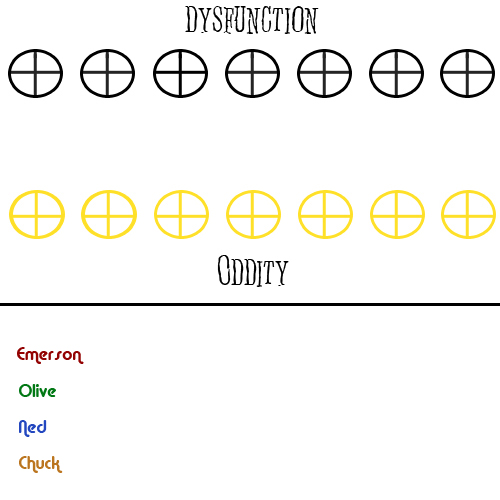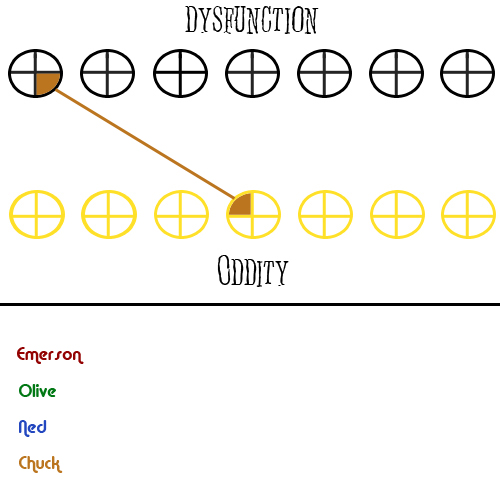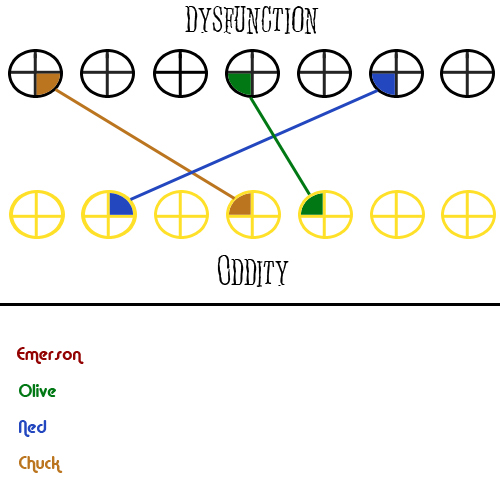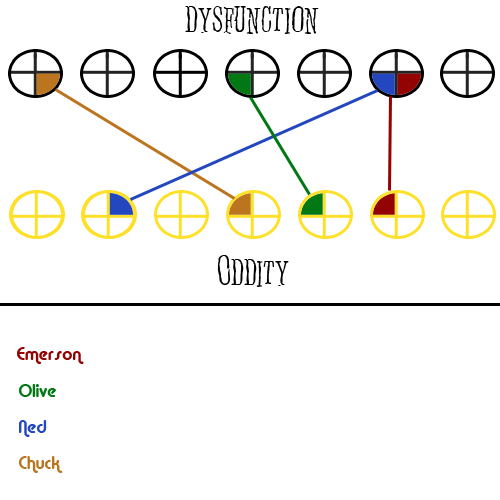I wasn’t going to post about this until after I got a playtestable draft of Addict up, but Shreyas challenged me to write the Pushing Daisies game (which I’d already been thinking about), and then some folks asked me about it, so I thought I’d give you a preview of the guts under the dysfunctional relationship game I plan to make after Addict. (Note: I’m not separating out the relationship dynamics from Addict, I’ve decided– they’re a huge part of what makes the game compelling to me, personally. This is just something a little more lighthearted and convoluted.)
Thanks to Alex from #indierpgs, this game is tentatively titled “Perfectly Dysfunctional,” however, I like to call this social engine..
Relationship-Map Twister
There are spots on a board in two lines. These represent the two main traits: Dysfunction and Oddity. Dysfunctions are social issues– things which affect how the person interacts with the people around them– whereas Oddities are personal issues and secrets. The sky is the limit when it comes to how odd of an Oddity you can have, but I’d encourage players to keep a good social contract and discuss the type of game you want to play beforehand.

The first person goes. Since one of the big inspirations for this game is the uniformly excellent TV show Pushing Daisies, and that is what Shreyas wants to play with this, we’ll be using examples from the show. Chuck goes first! Her Dysfunction is “Sheltered,” and her Oddity is “Used to be dead.”

Ned goes next. His Dysfunction is “Fear of intimacy,” and his Oddity is “Brings dead people back to life.” He has two choices; he can either touch Chuck– share one of her two traits– or he can cross Chuck. When you cross someone, you declare a relationship with that person. You can only declare your side of the relationship! How the other person feels about you can be explored in play. Ned chooses to cross Chuck, and declares that he is in love with her.

Olive goes next. Her Oddity is “Bursts into song when emotional,” and her Dysfunction is “Wants what she can’t have.” She chooses to cross Ned, and declares that she is in love with him.

Emerson goes last. His Oddity is that he loves to knit; his Dysfunction is that he, too, has a fear of intimacy. He decides not to cross anyone, since he is sharing a Dysfunction with Ned.

So yes. R-maps aren’t very revolutionary, I realize, but I like how this bases everything off of one-sided emotion and shared issues, which seems to be the hallmark of dramedy entertainment these days.
Recent Comments